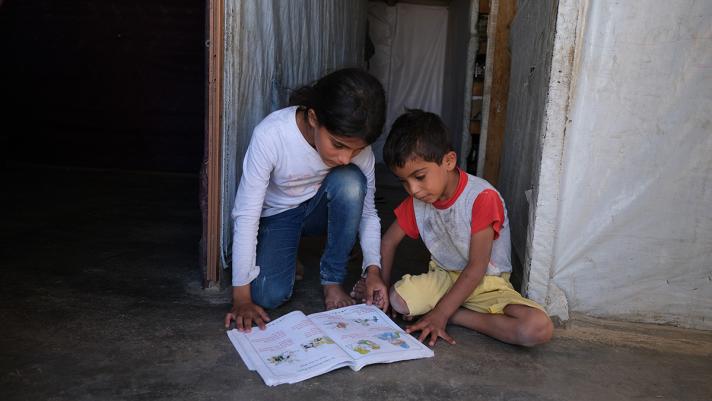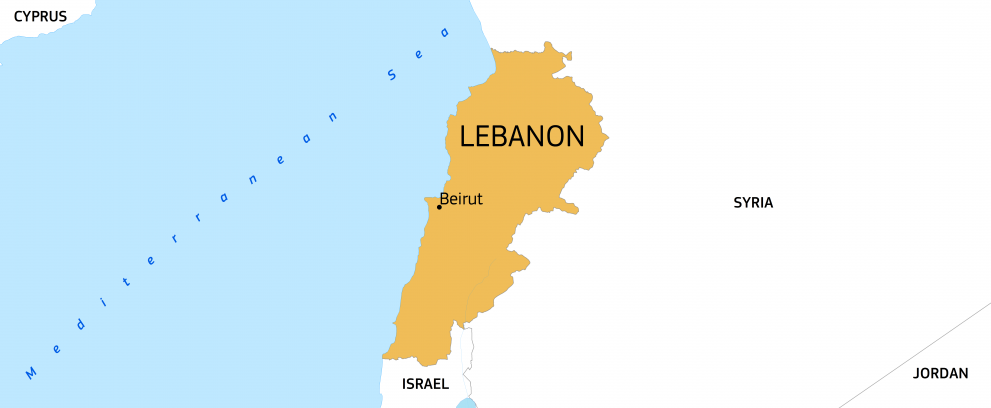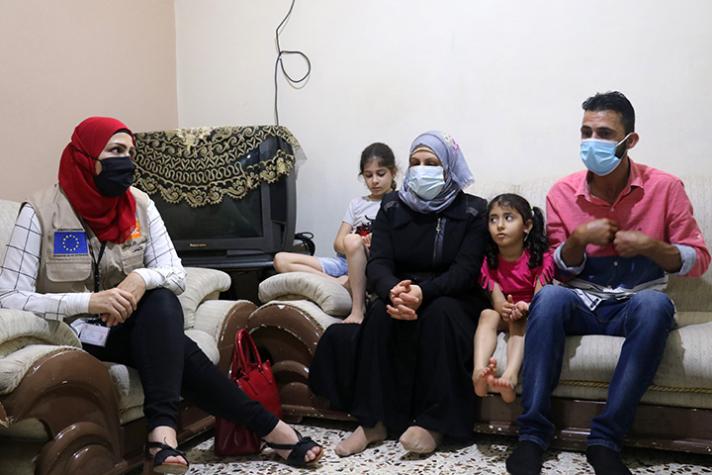Introduction
People in Lebanon, including refugees, are facing several challenges including poverty and food insecurity, while having limited access to services. Ongoing hostilities between Israel and Hezbollah are dramatically exacerbating these vulnerabilities.
The conflict and its consequences are now affecting all aspects of life in Lebanon for all populations in the country.
The hostilities have escalated swiftly since the 7 October 2023 attacks on Israel, from limited incursions, shelling, and exchanges of fire to recent and severe air strikes of several areas of the country, including Beirut. This escalation has led to a sharp increase in the number of internally displaced persons (IDPs), alongside a rising toll of casualties, loss of livelihoods, and growing healthcare needs.
As of 29 September 2024, OCHA reported that 1 million people in Lebanon have been affected by the conflict. IOM recorded the number of internally displaced persons (IDPs) at 541,527. At least 160,000 people have fled into Syria, with severe protection concerns.
Lebanon has also struggled to cope with previous emergencies like the Beirut port blast, COVID-19, and the cholera outbreak in autumn 2022.
These events are compounding the effects of the ongoing and severe economic crisis. Prices have risen drastically, and nearly 2.5 million Lebanese nationals and Syrian refugees are also food insecure.
What are the needs?
In addition to the ongoing conflict and the economic crisis, Lebanon is in the grip of a severe financial and political crisis. These have resulted in widespread poverty, the collapse of public services, and escalating community tensions.
The situation is further exacerbated by a persistent political deadlock and rising anti-refugee rhetoric.
Lebanon is one of the countries with the highest number of refugees per capita in the world. Around 20% of Syrian refugee families live in informal settlements and collective shelters, often in deplorable conditions. In a number of cases, they face discrimination and bureaucratic hurdles, with extremely limited livelihood opportunities. These factors often lead to the adoption of negative coping mechanisms.
The economic crisis has also pushed many Lebanese into poverty. Due to the depreciation of the Lebanese pound and high inflation, people’s purchasing power has significantly decreased.

Needs assessments show that all population groups struggle to cover their basic needs, particularly in terms of food and health care. Public services were already struggling before the economic crisis and are now on the verge of collapse.
Access to health care has been drastically reduced due to financial barriers and lack of medicine. Many health staff have left the country due to low wages, making it even harder to access critical secondary health care. The current hostilities have aggravated the issues, with services struggling to respond to the needs of the displaced and conflict affected.
More than 10% of the 1.2 million school-aged Lebanese children are out of school, mainly due to economic vulnerabilities. Additionally, 54% of the 715,000 Syrian refugee children are out of formal education, with only 47,000 of them accessing some form of non-formal education. Nearly 8,500 primary and secondary school students – many of whom are Syrian refugees and asylum seekers – have been affected by regular disruptions of access to education.
The ongoing conflict has intensified the pre-existing needs for services among both vulnerable Lebanese and non-Lebanese population.

How are we helping?
n 2024, the EU provided €104 million in humanitarian aid to help vulnerable populations in Lebanon.
This includes additional €10 million to respond to the increasing needs following the escalation of hostilities between Hezbollah and Israel.
On 3 October, further €30 million in funding to address humanitarian needs was announced.
EU funded humanitarian partners are currently responding to the needs of those displaced by the hostilities by providing emergency cash, healthcare, hygiene kits, and psychosocial support.
France, through the EU Civil Protection Mechanism (UCPM), sent 12 tonnes of medical aid, including 2 mobile health posts, in support of overwhelmed Lebanese hospitals.
Since 2011, the EU allocated over €971 million in humanitarian aid to respond to the urgent needs of the population, both Lebanese and refugees.
Initially, the focus was on Syrian refugees in response to the Syria crisis. However, as the situation worsened for the broader Lebanese population, especially since 2019, EU humanitarian aid is now being delivered both to the Syrians and Lebanese who are most in need.
The EU-organised series of Brussels Conferences aim to address the needs of Syrian refugees and host communities in Lebanon. Through our humanitarian funding, we support vulnerable populations to meet their basic needs through health care, education, protection, and legal services.

We continue to support services for at-risk children and survivors of sexual and gender-based violence. In addition, we fund the UN Refugee Agency and other partners to provide legal aid for obtaining essential documentation and legal residency.
Education in emergencies is a priority for the EU. In Lebanon, we ensure Syrian out-of-school children can access non-formal education while supporting their transition into formal education.
In the health sector, the EU supports access to quality health care, including via the procurement of medicines and life-saving secondary health care for the most vulnerable.
Last updated: 04/10/2024
Facts & figures
People in need of humanitarian assistance:
3.7 million people in need
2.05 million vulnerable Lebanese
346,209 registered Internally Displaced Persons (IDPs)
1.5 million displaced Syrians of which around 815,000 Syrian Refugees registered with UNHCR
489,000 Palestinian refugees
176,504 migrants
(sources: OCHA, UNHCR, and UNRWA, IOM)
EU funding:
€104 million in humanitarian aid in 2024
€2.64 billion since 2011, including over €971 million in humanitarian aid

